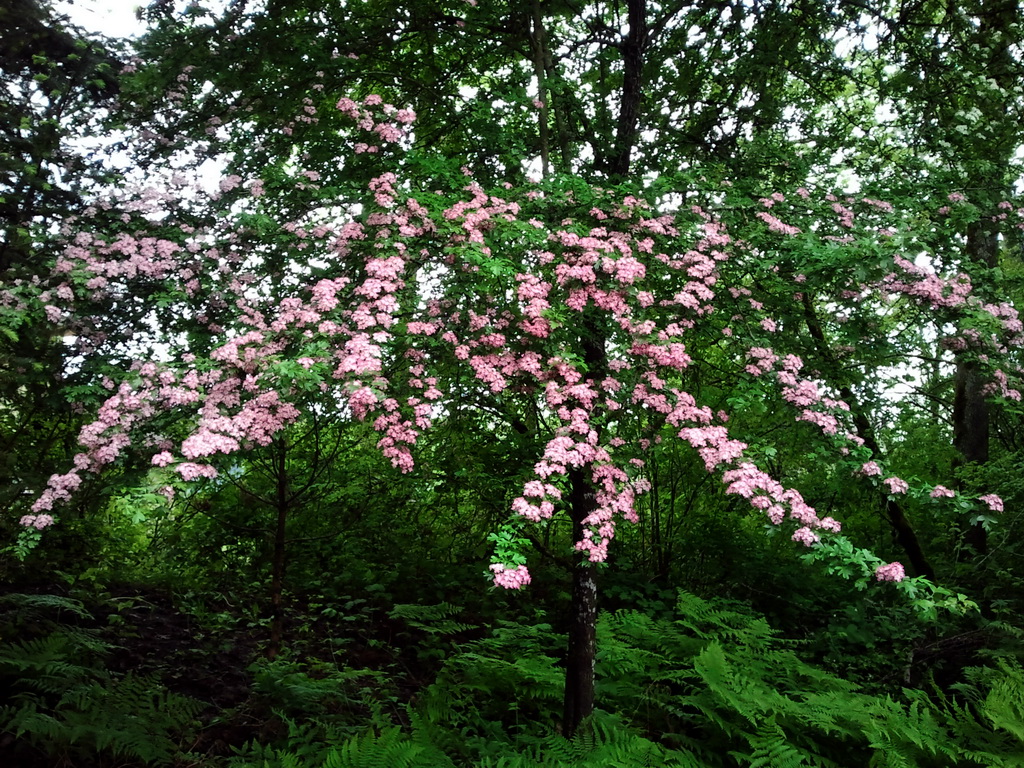If you have driven your car or ridden your bike just about anywhere around Washington county in the last couple of weeks, then you've probably seen and perhaps smelled the blooming Hawthorn trees. The Hawthorn family is huge, with hundreds of cultivated varieties. Almost all the ones you see along roads are known as Common Hawthorn (
Crataegus monogyna) varieties native to Europe that have naturalized over the years.
There are several dozen along highway 219, south of Hillsboro. On our own property we have half a dozen or so in all age ranges. They seem to be extremely prolific and due to the pungent flower smell and the nasty long thorns, I can see why they survive - even the deer won't eat them! In the Fall they produce very colorful red fruits, about 1 cm wide that last into Winter. Hawthorn trees are very hardy as well and can live up to 400 years!
There seem to be two local non-native varieties, the white flowering and the pink flowering, with the white being far more common. The berries can be used for jam, but they do have large seeds; and reportedly, the dried leaves can be used as a non-nicotine tobacco - who knew?!
The Black Hawthorn (
Crataegus douglasii) is native to the Northwest, but I have not seen any of those yet! Its flower is nearly identical, but the leaves are not lobed like the common variety. And, the fruits are much darker, hence the black name. Another native, the Columbia Hawthorn, grows east of the Cascades and has REALLY long thorns, 2-4 inches long - yow!
 |
| Common Hawthorn, about 20 years old. |
 |
| White blossoms on above tree. Note the lobed leaves. |
 |
| The namesake thorns on a three year old shrub in our field. |
 |
| The pink variety, probably 12-14 years old. |
 |
| Pink Hawthorn blossoms. |
 |
| Berries on our trees, Sept. 27, 2014 |
 |
| There seem to be as many berries as there were blossoms! |







No comments:
Post a Comment